by Zan Raynor, certified dog trainer and CEO of ELLAS Animals INC
Autism is a spectrum and manifests differently in each person, so it’s difficult to generalize about the needs of autistic people. Autism is also a lifelong condition so the lifestyle, daily routines, and needs of an autistic person necessarily change as they age from childhood into adolescence, adulthood, and retirement. Not every autistic person needs nor could benefit from an autism service dog but many autistic people receive concrete benefits and assistance from their autism service dog, partly because service dogs are as individual as autism itself.
To meet the legal definition of a service dog, the dog must provide a service for a person with a disability as defined by the ADA and must be individually trained to perform task(s) and/or work that mitigate the symptoms of that person’s disability. The individualized nature of both autism and service dogs makes them a logical match. An autism service dog must perform specific task(s) or work but there may also be a number of additional benefits that wouldn’t necessarily by themselves qualify the dog as a service dog. Not all of the tasks and work listed below would be helpful to every autistic person, nor is the list meant to be exhaustive, but merely a sample of some of the benefits of an autism service dog to an autistic person.
Sensory Processing
For autistic people, sensory processing is often at the center of their symptoms. With autism service dogs, the sense we’re generally working with is touch. Don’t underestimate the sensory input of the smell of a familiar dog’s fur or breath or the sound of their vocalizing or breathing or the soothing sight of their fur patterns and markings as any of the five senses can be engaged with a stim. (We don’t recommend engaging the sense of taste by licking your dog.) However, these sensory benefits generally lie outside the realm of trained tasks and are merely benefits.
Touch
We receive information about the world around us through our senses, including the sense of touch. We receive information about what we are touching and what is touching us. Touch also has a powerful effect on our nervous system and can be used intentionally as a tool to control our body’s response to situations and stimuli. When we talk about touch, we mean what our hands and fingers can feel, but we also mean everything our skin feels across our whole body, including size, shape, texture, and temperature. Furthermore, we mean our muscles and joints that interpret where our body parts are and how much pressure is being applied (by us or on us), which is our proprioceptive system.
Our autonomic nervous system has two main subsystems. The sympathetic system is responsible for the “fight or flight” response and it’s what is operating when we are facing a stressful situation or an emergency but it’s also what drives our tasks and activities and helps us get stuff done. The parasympathetic system is responsible for our involuntary functions like heart rate, blood pressure, digestion, and sleep. One wakes us up, activates us, and alerts us; the other calms us, settles us, and relaxes us. One releases stress hormones like adrenaline and cortisol; the other releases happy hormones like serotonin and dopamine. Both are necessary for effective participation in the major life activities.
Interestingly, being touched can activate both of these systems. Light touch can activate our sympathetic system and help get us alert, organized, and active. Deep touch can activate our parasympathetic system and help us relax and calm down. Both types of touch can be effective tools to manage the sensory processing and executive function of autistic people.
Deep Pressure Therapy
Deep Pressure Therapy (DPT) is well-documented clinically and a well-known approach, like weighted blankets or compression clothing, to reduce cortisol, blood-pressure, stress, anxiety, and panic, and to increase serotonin and dopamine. Autism service dogs can be trained to apply DPT in a variety of ways depending on the size of the dog and the person and what is effective for the autistic person. The dog can lie on the chest of the person who is also lying down. The dog can drape their entire body or just their torso across the lap of the person who is sitting. The dog can press against the person’s chest or legs or sit on their feet. There are many different positions for both the person and the dog and a team may be trained to utilize several depending on their location and needs at that time. DPT is effective for many autistic people to manage meltdowns or anxiety attacks. It can also help ground a person experiencing sensory overload and can position the dog in such a way that the person can receive other services or benefits from the dog.

Tactile Stimulation
Another task that can be customized to the needs of the autistic person is tactile stimulation. Active tactile stimulation means the dog is trained to touch the person, either on command or when recognizing particular symptoms/behaviors. The autism service dog may touch the autistic person with their paw or their muzzle, once or repeatedly, or the dog may lick the person, either vigorously or gently, for a short time or until commanded to stop, on the face or hands or anywhere it’s effective. Licking the face also engages the sense of smell in addition to touch. Some of these behaviors are the same as behavior interruption (described below) but in this case they are providing an alternative, i.e. stimulating the person’s nervous system to provide sensory input, one of the reasons an autistic person may stim. This can release cortisol and adrenaline appropriately to help an autistic person engage and act instead of shutting down.

Tactile stimulation also provides a focus point. The autistic person can focus just on the touch from the animal, and block out all of the rest of the sensory input, like too much noise or too much light or movement or unpleasant temperatures or whatever is overwhelming the person’s senses. In this way, tactile stimulation can be grounding like DPT and the two can actually work together to calm and then reconnect the person to the current time and place.

Tactile stimulation can also be passive on the part of the dog, which means the person is touching the dog . This may be the person petting the dog, running their fingers through the fur or along the body (which also releases the smell of the fur), or playing with the dog’s ear(s). A typical combination might be having the person run their fingers through the dog’s hair or play with their ears or rub their forehead while the dog maintains a sit-stay or stand-stay beside them, perhaps even applying active pressure by leaning against the person’s leg. This can actually be quite a complex yet discreet task in public. Another combination is the dog lying on the person’s chest or draped across the person’s thighs while the person runs their fingers through the dog’s fur. With training, you can develop this combo by starting with DPT and as the dog recognizes the person’s decreased respiration rate, the dog can begin the next stage of grounding by licking the face.
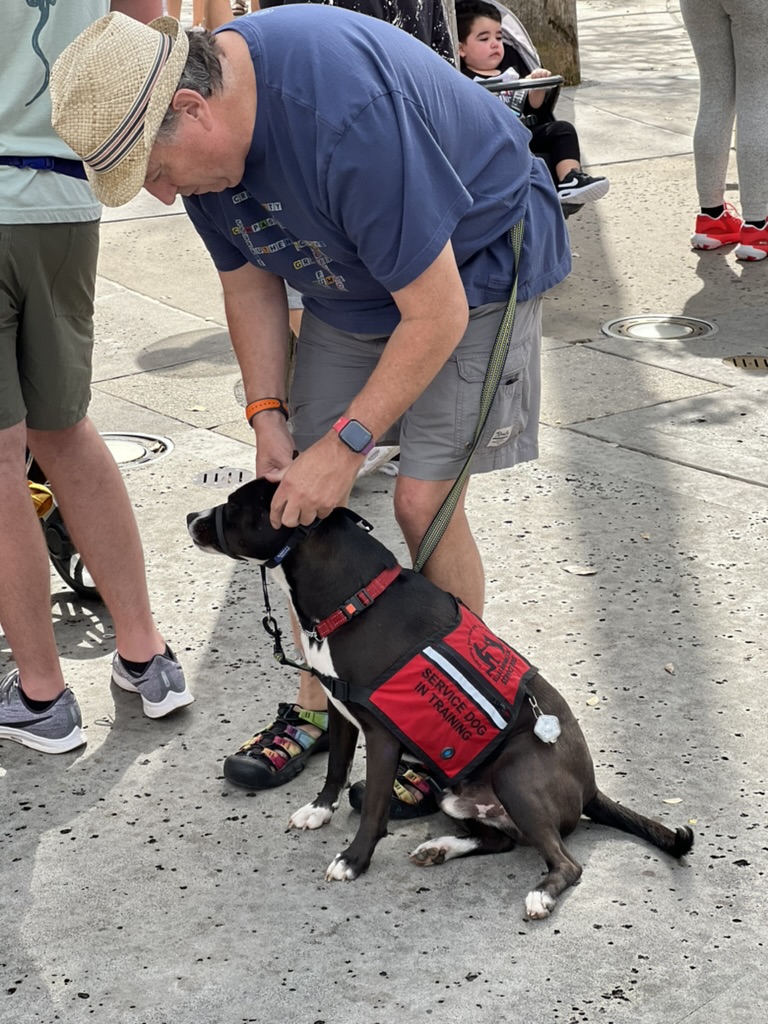
Behavior interruption
Many autistic people stim for a variety of reasons, from reducing stress or sensory overload to stimulating the senses. Stimming isn’t always something that needs to be stopped or controlled but sometimes it can be embarrassing or harmful. Autism service dogs can be trained to watch for particular stims and interrupt them by tapping, nudging, or licking the person, or a number of different active responses.

Behavior substitution
Sometimes when people are stimming, it’s because they are experiencing stress, whether from sensory overload or other causes. Autism service dogs can be trained to perform particular behaviors, either on command or whenever they notice a specific set of conditions (e.g. recognizing the person’s stress stim or response like crying, shaking, etc.). For example, if a person picks their cuticles, their dog can be trained to lick their cuticles and provide a safer but similar stimulation.

Alerting
Some autistic people may shut down their senses when overwhelmed. For example, if the environment is too loud, they may shut down their sense of hearing and miss someone talking to them or calling their name or even loud sounds like sirens or alarms. Similarly, if the environment is too bright or too dark, they may shut down their sense of sight and not see that it is their turn to move or that someone is signaling them or something might bump into them. Autism service dogs can be trained to alert with a touch (tap or nudge) when the person is not responding to a specific sound or a sight.
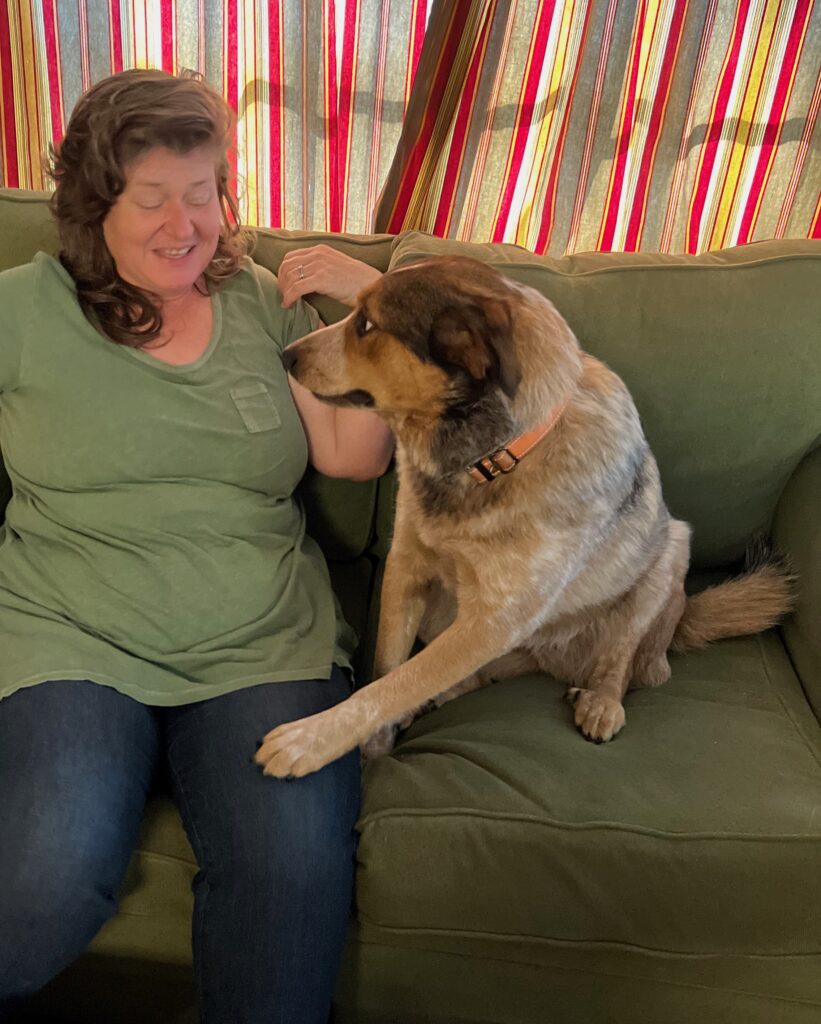
Buffering
Crowds can be challenging for autistic people. Not only do they tend to be loud and have a lot of smells and sights, but they can also be jostling. People bumping into each other can be hard for those who have trouble being touched, as can people getting too close to their face, invading their personal space. An autism service dog can be trained to position themselves on either side, in front, or in back of the person, or even walk in circles around the person, to create some space and prevent bumping and jostling.
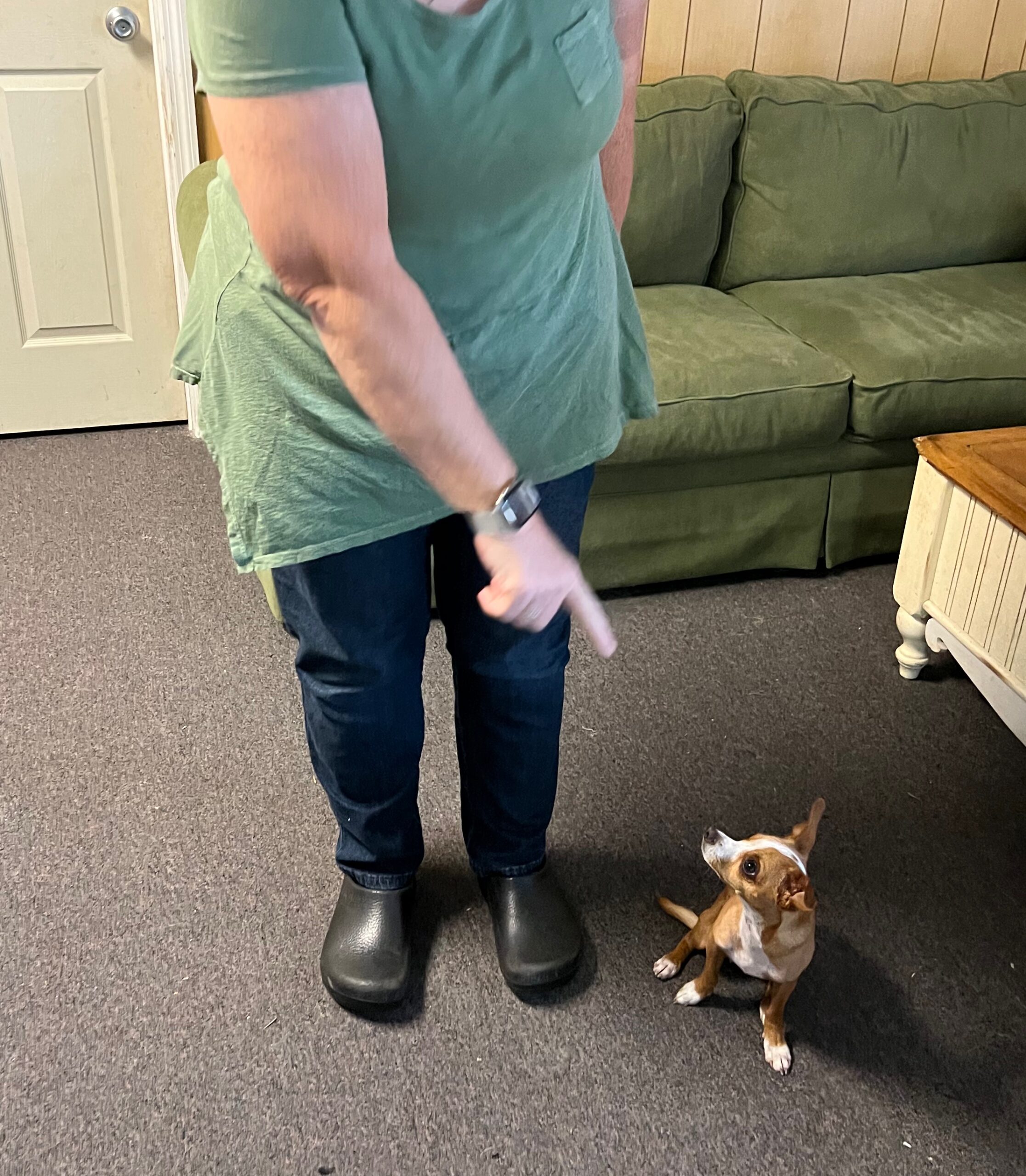

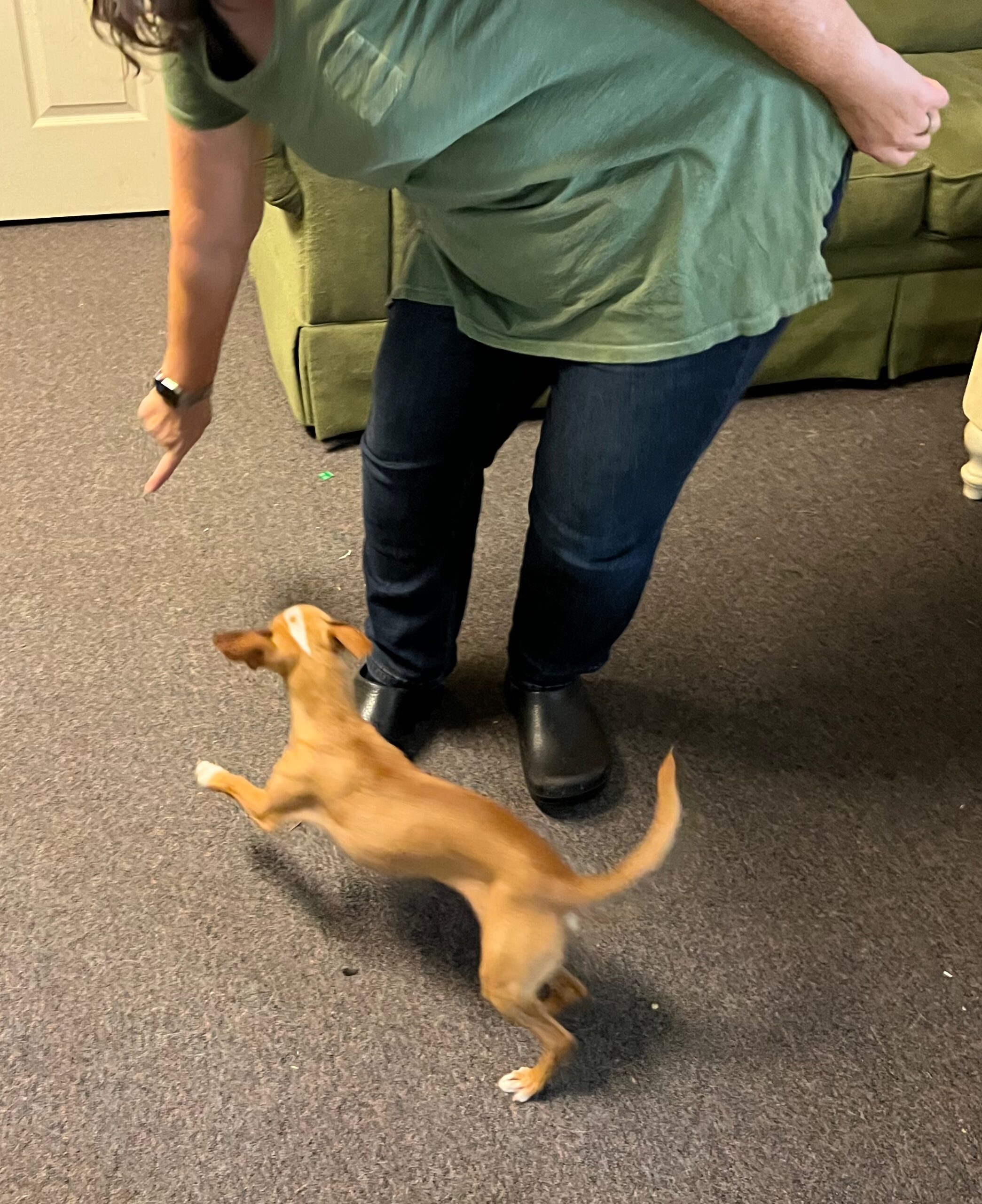


Guiding/Reminding
Sometimes autistic people have trouble with short term memory. If they have trouble remembering where they parked their car after shopping or eating, an autism service dog can be trained to find the car. Similarly, an autism service dog can help find an exit or find a family member. An autism service dog can be trained for reminders such as medication or lock the door or bring the keys.
Retrieving/Carrying
Sometimes autistic people may struggle with fine motor skills and may drop things more often than others or perhaps not even realize they did. Autism service dogs can pick items up, and even carry them if that helps the person.
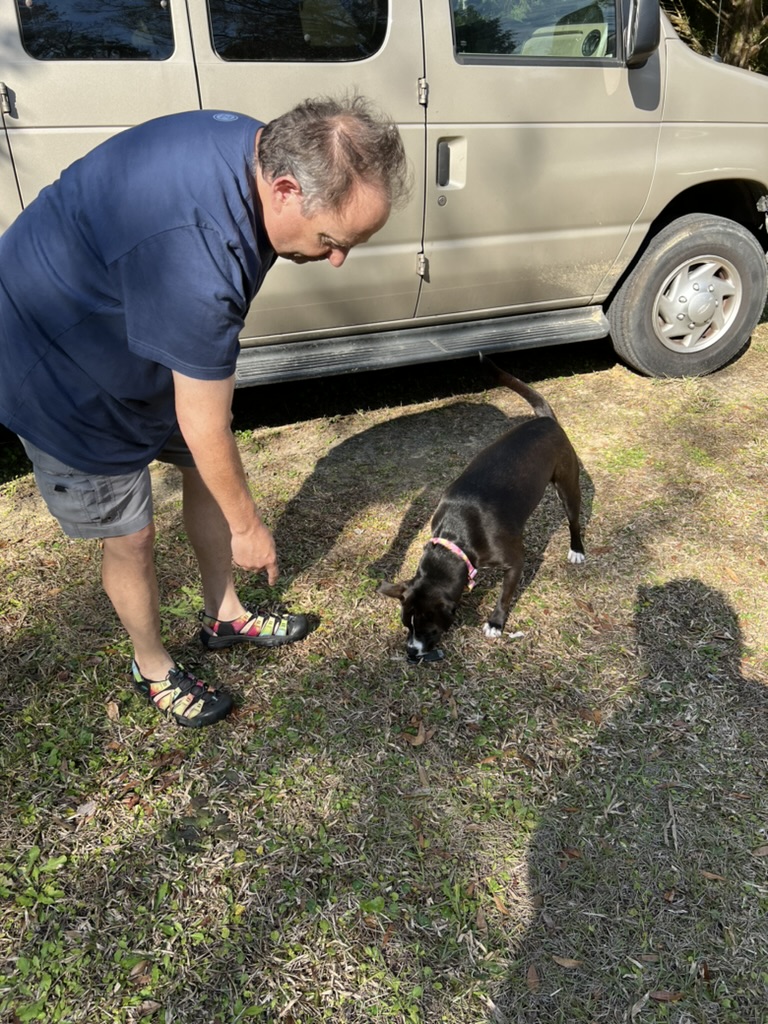
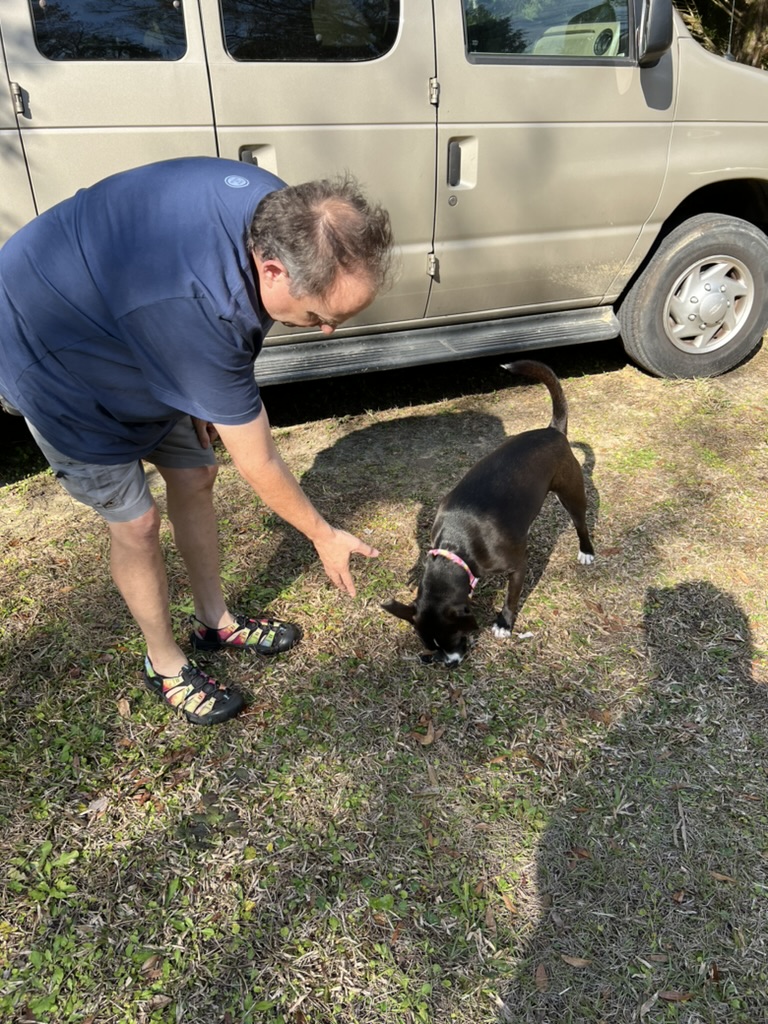

Sleeping
Many autistic people have trouble sleeping. Autism service dogs can be trained to maintain a down-stay, pressing against or on top of a person to help them fall asleep or remain asleep. They can also be trained to wake a person from a nightmare.
Eloping protections
Some autistic children elope or bolt. Tethering the dog to the child and training the dog to drop to a down-stay to prevent the child from moving are controversial, as is training the dog to block the child’s movement with their body. However, an alternative safety measure is alerting to eloping. An autism service dog can be trained to alert the child’s guardian, with a bark or a tap, when the child passes a threshold, e.g. 6 feet away from the guardian when out in public or the edges of the yard when outside at home or exiting any door from inside the house. Autism service dogs can also be trained in Search and Rescue, and in this case it’s their own person that they are trained to track when they have disappeared.
Autistic adults and autistic children
It’s no surprise that autistic adults and autistic children may utilize their autism service dogs quite differently. The age of the autistic person may play an important role in deciding which task(s) or work are designed to be commanded or to be automatic. An autistic adult may handle their own service dog, but an autistic child may be part of a team of three – the autism service dog, the guardian as the dog’s primary handler, and the child. The tasks themselves may change over time.
At home or out in public
A service dog that meets the legal requirements from the ADA can be taken into public access where pets are not allowed, such as stores, restaurants, and schools. Often, these types of public places are exactly where autistic people struggle with sensory overload and unexpected changes that they have trouble adjusting to, as well as higher social demands that can be challenging for autistic people. However, an autism service dog performs these and many other tasks at home, too.
Beyond trained tasks
Although the legal distinction of the dog as a service dog hinges on these types of trained tasks which assist autistic people in regulating and managing themselves at home and out in public, the benefits of an autism service dog for some autistic people extends far beyond these trained tasks and the moments when they are being performed. An autism service dog is a true friend who accepts you as you are without judgment or negative feedback, who loves you unconditionally and never rejects you. This can be rare for an autistic person as autism often affects social skills and building/maintaining relationships. Training and/or handling the dog can be a source of confidence. The dog themselves can be an ice-breaker, a topic of conversation, a way of drawing people to you that can result in comfortable and familiar interactions that begin to build friendships and relationships, or even just small talk, which can be unpleasant/unbearable for autistic people. The dog can help teach empathy to an autistic child and help establish self-care routines for more independence and consistency.

In fact, for some autistic people, their autism service dog can be a communication tool so that they can make eye contact with the dog, when they can’t make eye contact with the person they’re speaking with, or they can actually speak to the dog, even though what they’re saying is meant for the person who can hear them talking to their dog. This doesn’t require active training of the dog to perform a task but can be an invaluable tool to the autistic person who can’t engage in common verbal interaction with others for the basic transactions of daily life.

Many autistic people have trouble adjusting to new places or changes in their routine or even just the daily changes from one place or activity to another. Having their autism service dog with them can help them through these transitions. The dog provides a routine of their own, needing care throughout the day, wherever they go and whatever they do, and it is this routine that comforts and grounds an autistic person. Caring for the dog and going through the familiar routine for the dog is precisely the familiarity and dependability that may allow an autistic person to venture out of their comfort zone and experience new places and activities, rather than only their restricted interests and activities. It may not qualify as a task but it may well be the most important service the dog provides that allows a fuller, more public, more social, and more independent lifestyle for the autistic person.
Nothing in ELLAS Animals INC’s website or blog is intended as medical, legal, or financial advice. We receive no compensation for recommendations or reviews.
